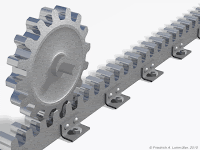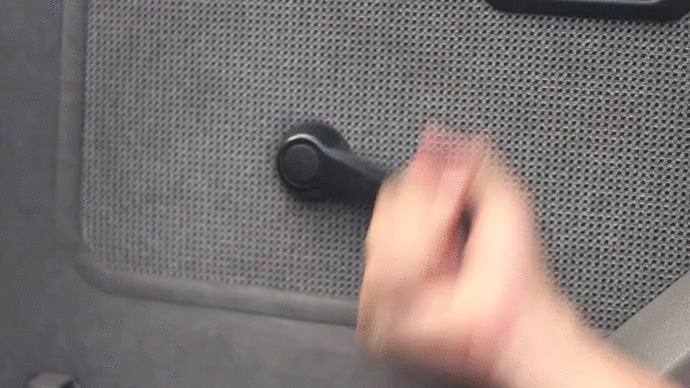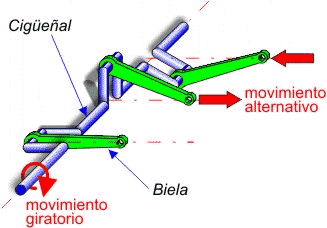The linear motion can be undirectional or reciprocating, that alternate from one side to the other.
⇨ ROTARY-LINEAR TRANSFORMATION
➜ Wheel
Wheels are important parts of bicycles and they let us move more easily because they reduce our contact with the ground and decrease friction, but if there isn't enough friction, the wheels can slide out of control.
A wheel moves forward a distance that is equal to its circumference, so we need less force with larger wheels and they move more quickly.

➔ Rack and pinion mechanism
This mechanism transforms rotary motion into linear motion as a wheel an it has two parts. The rack is a bar with many teeth and the pinion is a gear with teeth that interlock with the rack. The pinion rotates and the rack moves in linear direction. It can be reversible. We use them for sliding dors, conveyor belts...

➔ Nut and bolt mechanisms
As a rack and pinion, this mechanism has two parts: a bolt or shaft with a spiral groove and a nut that turns around it. We can turn and tighten the nut or the bolt in order to holds things together. We can use this mechanism to lift loads because it acts as a reducing system. Ex: scissors jacks, water tap mechanisms, screw-top bottles...

➔ Winch and crank mechanism
A winch is a cylinder that rotates around a horizontal axis. We attach a rope to the winch and to a load, and we turn the crank to rotate the winch. The rope rolls up and lifts the load. The crank increases the force and the winch transforms rotary motion into linear motion. This is proportional to the ratio between the radious of the crank and the radius of the winch.
We find this mechanism in construction cranes and in the mechanism that raises window blinds in our homes.


⇨ RECIPROCATING ROTARY-LINEAR TRANSFORMATION
 The pedal of a bicycle transforms the reciprocating movement of our legs into continuous. Some mechanisms work in the opposite way.
The pedal of a bicycle transforms the reciprocating movement of our legs into continuous. Some mechanisms work in the opposite way.➜ Crank and rod mechanism
This mechanism was important for the fist steam engines. Today we find cranks and rods in internal combustion engines, as well as windscreen wiper mechanisms.
➔ Crankshaft mechanism
A crankshaft mechanism is formed by multiple rods connected to one shaft. The rods are connected to cranks and the cranks are connected to the crankshaft.
This mechanism can synchronise the movements of various parts. We use them for sewing machines.

➔ Cam mechanism
A cam is an irregularly shaped device that rotates on a shaft. When the cam rotates, it pushes a bar called follower, that can move other parts and it can turn a switch on and off.
If we put multiple cams on one shaft, form other mechanism called camshaft, that makes the same function of a crankshaft. We can find them in toys, automatic tools and combustion motors.
Some cams are circular, but with an axis of rotation that is off-centre. These are called eccentric cams because they rotate in an irregular way. We can find them in sewing machines.
No hay comentarios:
Publicar un comentario